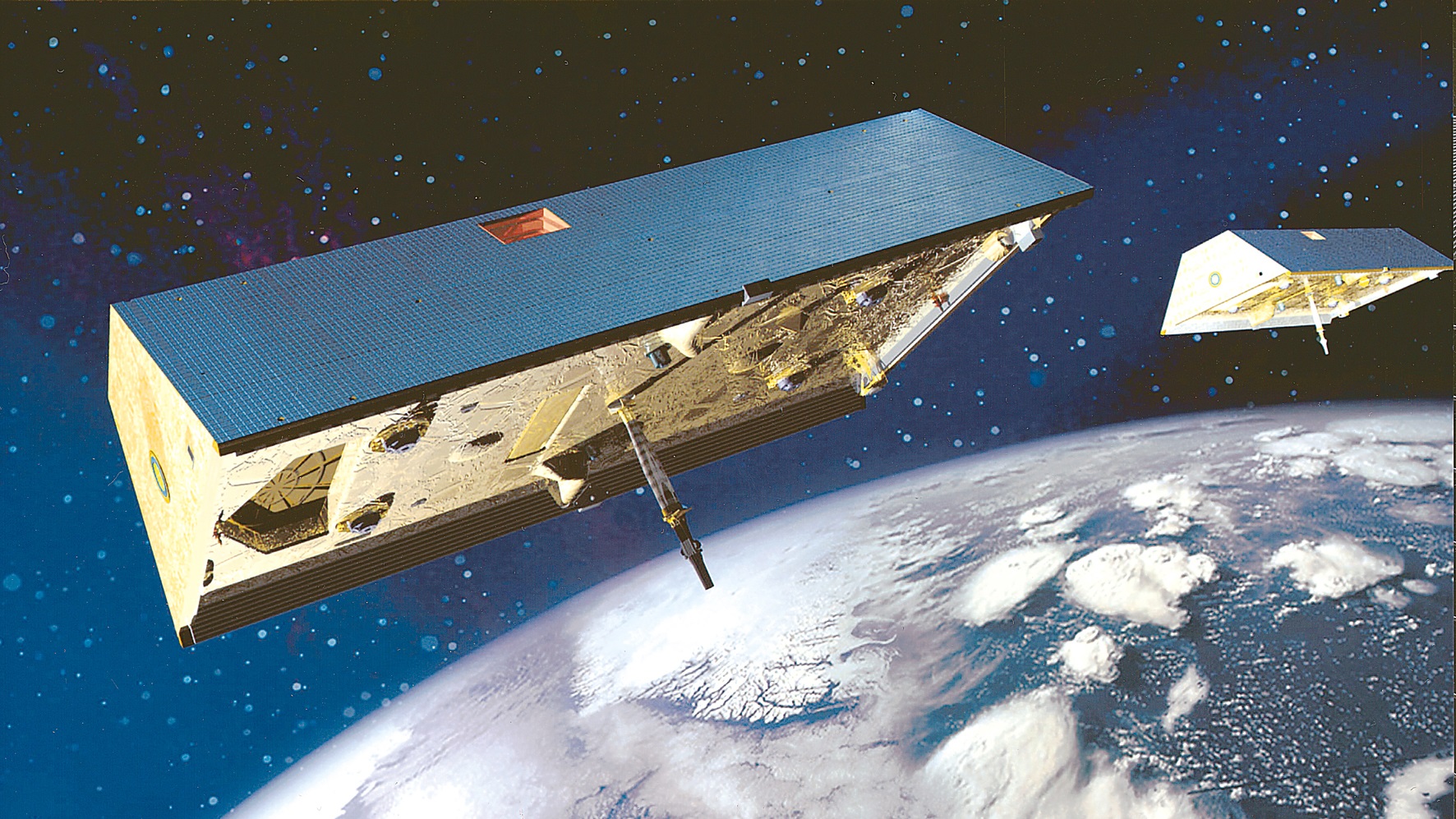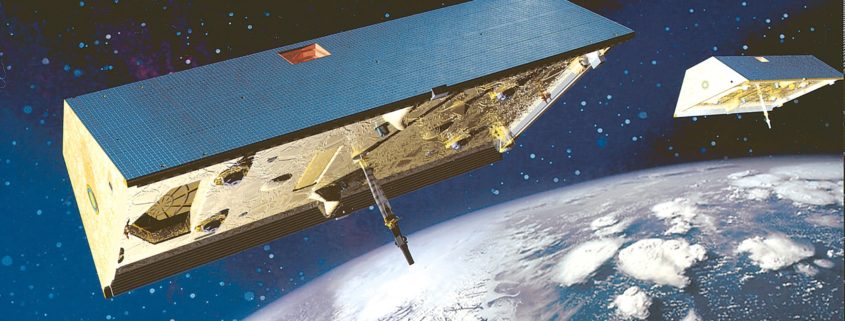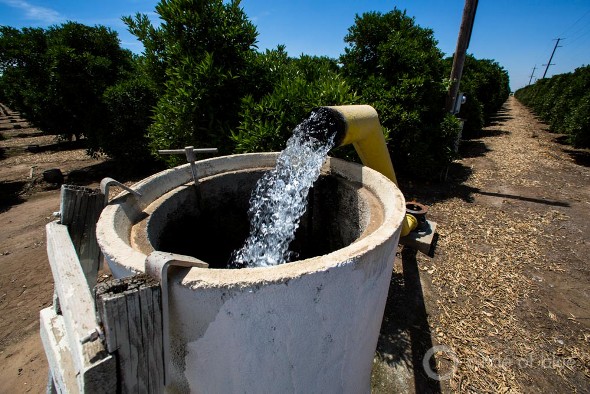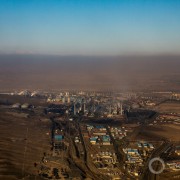NASA Ends Trailblazing Satellite Mission that Revealed Global Groundwater Trends
Due to old age and battery failure, NASA terminates the GRACE satellite mission.

The two GRACE satellites mapped changes in the Earth’s gravity fields during their 15-year mission. Photo courtesy of the German Aerospace Center
By Brett Walton, Circle of Blue
The unexpectedly long life of a pair of pioneering satellites that deepened scientific understanding of society’s influence on water and land is over.
NASA and its project partners decided to end the GRACE satellite mission this week after the eighth of 20 battery cells on GRACE-2 failed. GRACE-1 was still working, but the mission, which measures fractional changes in Earth’s gravity based on the position of the satellites relative to each other, requires both to move in tandem. Losing one means losing all.
Still, scientists on the project team and those who used its data celebrated the success of a $140 million mission that kept going and going and going, lasting a decade longer than anticipated.
“They were paradigm-shifting measurements in understanding the earth system,” Byron Tapley of the University of Texas at Austin told Circle of Blue. Tapley was the project’s principal investigator.
Scientists across the world embraced GRACE data. Land, ice, and liquid water — gravity exerts force on each. The satellite measurements helped American scientists investigate the draining of aquifers in northern India, the Middle East, and California. Researchers at the Chinese Academy of Sciences used its output to track groundwater depletion in the heavily irrigated wheat fields of the North China Plain. GRACE data revealed rapid melting of the Greenland ice sheet, and were incorporated into U.S. government drought monitoring. By showing areas of increasing ground saturation, the data were also used to forecast flood risk.
Jay Famiglietti, a professor at the University of California, Irvine, and frequent user of GRACE data to study changes in groundwater levels, said that GRACE opened new avenues of inquiry.
“The mission exposed, in a way that we hadn’t seen before, significant new hotspots for water scarcity,” Famiglietti told Circle of Blue. “It points to a complicated water future where we’ll need regional agreements and solutions.”
Though the first GRACE mission is over, a new satellite duo will soon take its place. A partnership between NASA and the German Research Centre for Geosciences, GRACE Follow-On, which will make the same measurements as its predecessor, is scheduled for deployment in March 2018.
A New Way of Seeing
Launched in 2002 and planned for a five-year mission, GRACE exceeded expectations. The satellites, nicknamed Tom and Jerry, were often referred to as scales in the sky, able to measure slight changes in the Earth’s gravitational pull. Using GPS and accelerometers, the satellites could detect shifts in their relative position as small as one micron, roughly the diameter of a blood cell.
Because it is quite heavy, water is usually behind these gravitational changes, which were translated into changes in ice mass or aquifer storage.
For groundwater, GRACE data were not perfect — the measurements could show trends over a large watershed or multiple states but not the rise and fall of the water table in individual wells or small aquifers. An assessment in the academic journal Groundwater argued that GRACE had limited use as a management tool because it lacked fine-grained detail. Despite the spatial limitations, GRACE data offered a broad picture of groundwater trends.
“GRACE revolutionized the way we look at global hydrology and the interaction between land, oceans, and ice sheets,” Famiglietti told Circle of Blue.
NASA expects GRACE-2 to lose altitude slowly and fall out of orbit sometime in December or January. The satellite will burn up as it passes through Earth’s atmosphere. GRACE-1, when it is decommissioned, will follow soon after.
Brett writes about agriculture, energy, infrastructure, and the politics and economics of water in the United States. He also writes the Federal Water Tap, Circle of Blue’s weekly digest of U.S. government water news. He is the winner of two Society of Environmental Journalists reporting awards, one of the top honors in American environmental journalism: first place for explanatory reporting for a series on septic system pollution in the United States(2016) and third place for beat reporting in a small market (2014). He received the Sierra Club’s Distinguished Service Award in 2018. Brett lives in Seattle, where he hikes the mountains and bakes pies. Contact Brett Walton








